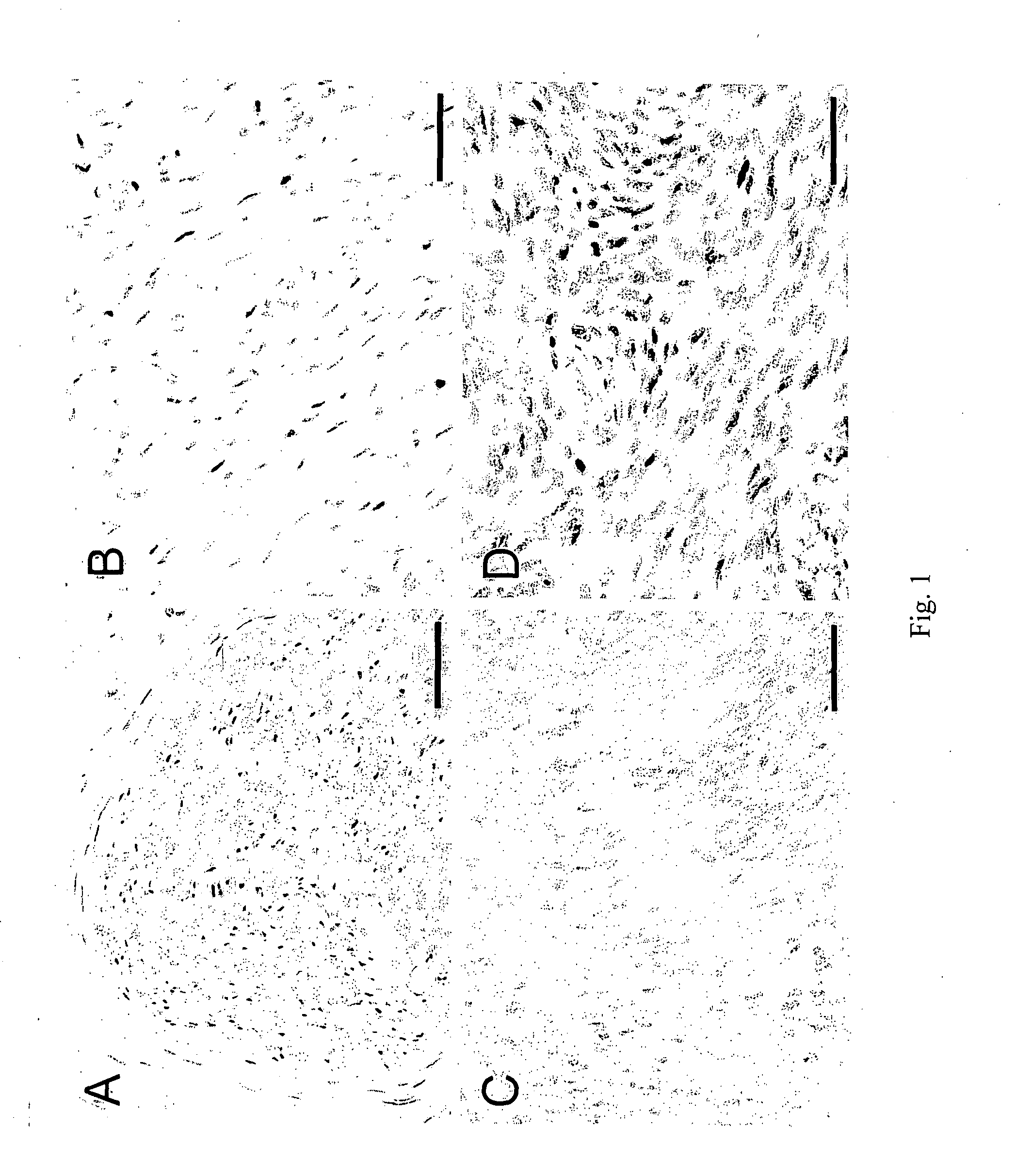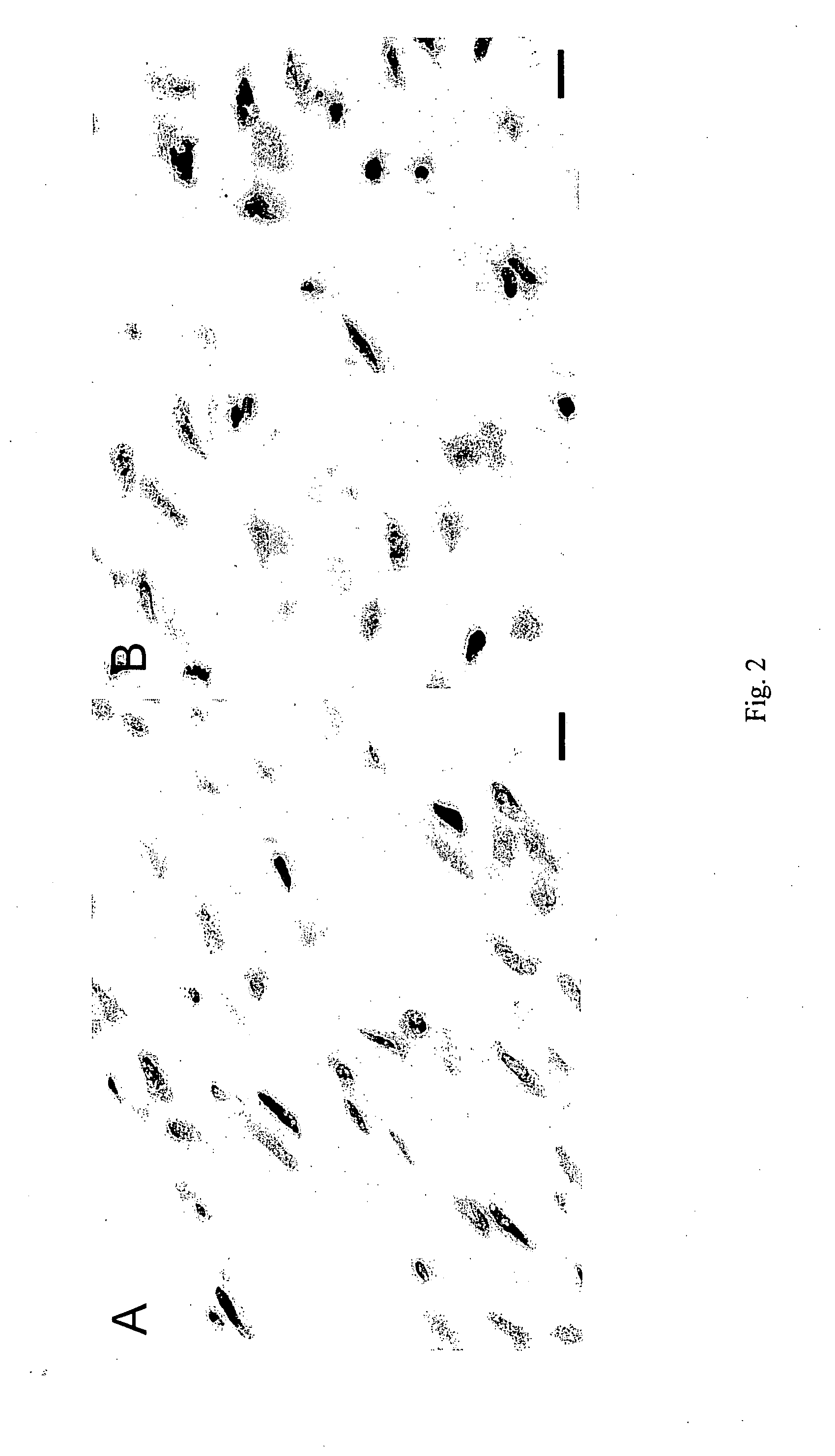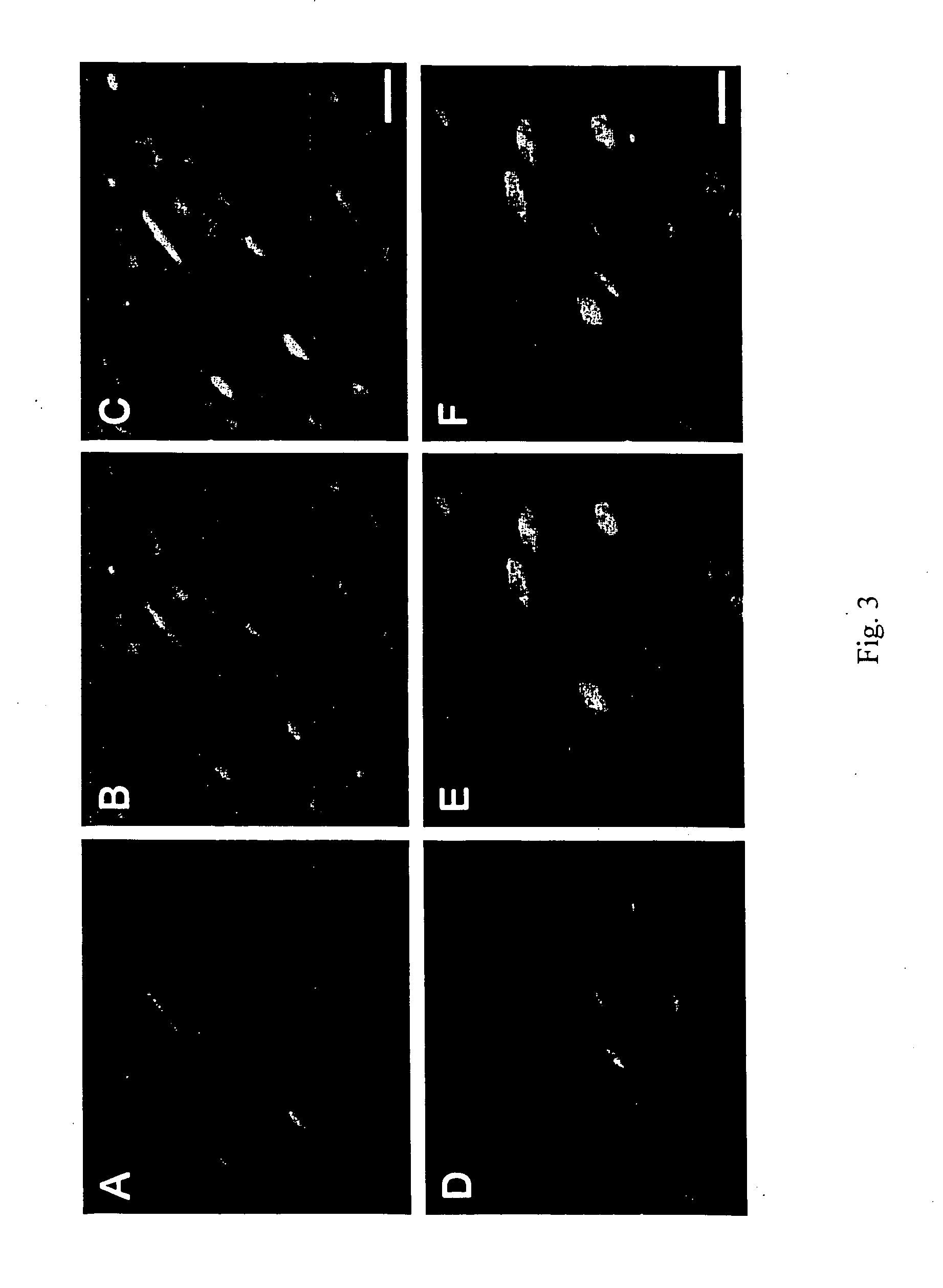Steroid modulators in the treatment of peripheral nerve sheath tumors
a peripheral nerve and tumor technology, applied in the field of treatment or prevention of peripheral nerve tumors, can solve the problems of significant neurological deficit, poor prognosis, and inability to complete surgical resection for large lesions or nf-1 patients, and achieve the effect of successfully treating pnsts
- Summary
- Abstract
- Description
- Claims
- Application Information
AI Technical Summary
Benefits of technology
Problems solved by technology
Method used
Image
Examples
example 1
Screening for Progesterone Receptor Expression in Peripheral Nerve Sheath Tumors
[0064] Several subtypes of neurofibromas have been described. While morphologically similar, their clinicopathologic features differ considerably. Localized and diffuse cutaneous neurofibromas affect the dermis and subcutis. Since these proliferations are extraneural, the nerve of origin is difficult to identify. Only a minority, approximately 10%, of cutaneous neurofibromas are associated with NF-1. Localized intraneural and plexiform neurofibromas proliferate intraneurally. While localized intraneural neurofibromas affect a segment of nerve, plexiform neurofibromas involve either a plexus of nerves or multiple fascicles within a large nerve. Like the cutaneous subtypes, the majority of localized intraneural neurofibromas are sporadic. By contrast, plexiform neurofibromas are found almost exclusively in NF1 patients. Most NF1-associated neurofibromas appear around puberty and increase in number later i...
example 2
Analysis of Progesterone Receptor Expression in Neurofibromas
[0066] The cutaneous neurofibroma subtypes were more frequently positive for PR (86%) than was the plexiform subtype (50%) (Table 2). This difference is statistically significant with a P value less than 0.025, and correlates with the clinical observation that the cutaneous subtypes first appear around the time of puberty while the plexiform subtype is thought to be congenital.
[0067] No significant difference was found between the frequency of PR-positive neurofibromas in males verse females (Table 2). When the plexiform neurofibromas which occur early in childhood in NF1 patients were excluded from the analysis, no significant difference was found between the frequency of PR-positive neurofibromas in patients less than or equal to 20 years of age and those over 20 years of age, and no significant difference was found between patients with NF1 and patients with sporadic neurofibromas (Table 2).
[0068] Eleven patients inc...
example 3
Analysis of Progesterone Receptor Isoform Expression in Neurofibromas
[0069] There are two isoforms of PR, PR-A and PR-B, which are transcribed from distinct estrogen-inducible promoters. In most contexts PR-B acts as a transcriptional activator, whereas PR-A acts as a transcriptional repressor. Both PR-A and PR-B contain an N-terminal inhibitory domain, however PR-B contains an extra 164 amino acid domain at the extreme N-terminus, which is thought to mask its inhibitory domain. PR-A is a transcriptional repressor of PR-B as well as of estrogen, glucocorticoid, androgen, and mineralcorticoid receptors. PR-A can heterodimerze with PR-B, and therefore may inhibit PR-B directly. PR-A, however, cannot heterodimerize with ER, suggesting that the mechanism of transcriptional interference is indirect and may involve binding to corepressors. In most PR-expressing cells, PR-A and PR-B are present in equimolar amounts. There are exceptions such as uterus, breast, and endometrial tumors which...
PUM
 Login to View More
Login to View More Abstract
Description
Claims
Application Information
 Login to View More
Login to View More - R&D
- Intellectual Property
- Life Sciences
- Materials
- Tech Scout
- Unparalleled Data Quality
- Higher Quality Content
- 60% Fewer Hallucinations
Browse by: Latest US Patents, China's latest patents, Technical Efficacy Thesaurus, Application Domain, Technology Topic, Popular Technical Reports.
© 2025 PatSnap. All rights reserved.Legal|Privacy policy|Modern Slavery Act Transparency Statement|Sitemap|About US| Contact US: help@patsnap.com



